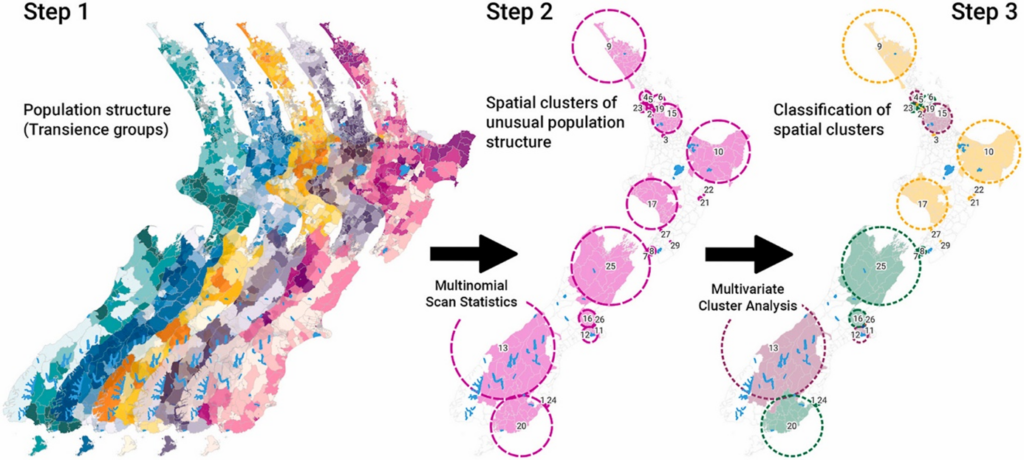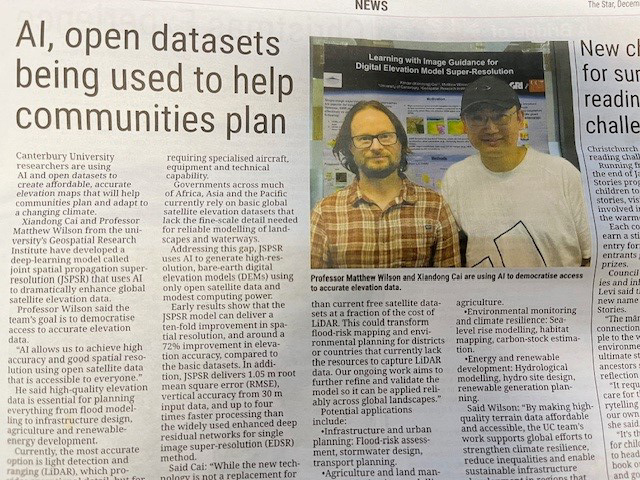Research team
Lukáš Marek (GRI GeoHealth Lab – UoC)
Samuel Hills (Bournemouth University (UK))
Jesse Wiki (GRI GeoHealth Lab – UoC)
Matt Hobbs (GRI GeoHealth Lab – UoC)
Malcolm Campbell (GRI GeoHealth Lab – UoC)
Funding
GeoHealth Laboratory/GRI
Duration
2023
Project summary
This nationwide geospatial study from Aotearoa New Zealand describes the frequency and spatial patterning of residential mobility and examines the interplay between patterns of residential mobility and the environments in which adults reside.
Data from the Integrated Data Infrastructure (n = 4,781,268 adults) defined levels of residential mobility in 2016–2020. We then used nationwide environmental data included within the New Zealand Healthy Location Index to define access to a range of health-promoting and health-constraining features.
We identified 29 spatial clusters based on the mobility characteristics of the population living within selected administrative units that were further classified into five groups based on the similarity of residential mobility groups. Each group was described by its relation to the Healthy Location Index, urbanicity and ethnicity.
A greater proportion of residential mobility was related to metropolitan and large regional centres, and Māori, Pacific and Asian ethnicities. Areas with higher levels of vulnerable mobile population were identified in the North Island (Northland, Gisborne, Whanganui and urban pockets of Auckland, Hamilton, Napier and Hastings). While there was poor access to health-promoting environments for the mobile population living in the inner cities, areas with higher residential mobility elsewhere are often associated with better access to health-promoting and neutral features.
Outputs
Marek, L., Hills, S., Wiki, J., Campbell, M. and Hobbs, M. (2023). Towards a better understanding of residential mobility and the environments in which adults reside: A nationwide geospatial study from Aotearoa New Zealand. Habitat International 133, 102762. https://doi.org/10.1016/j.habitatint.2023.102762.



